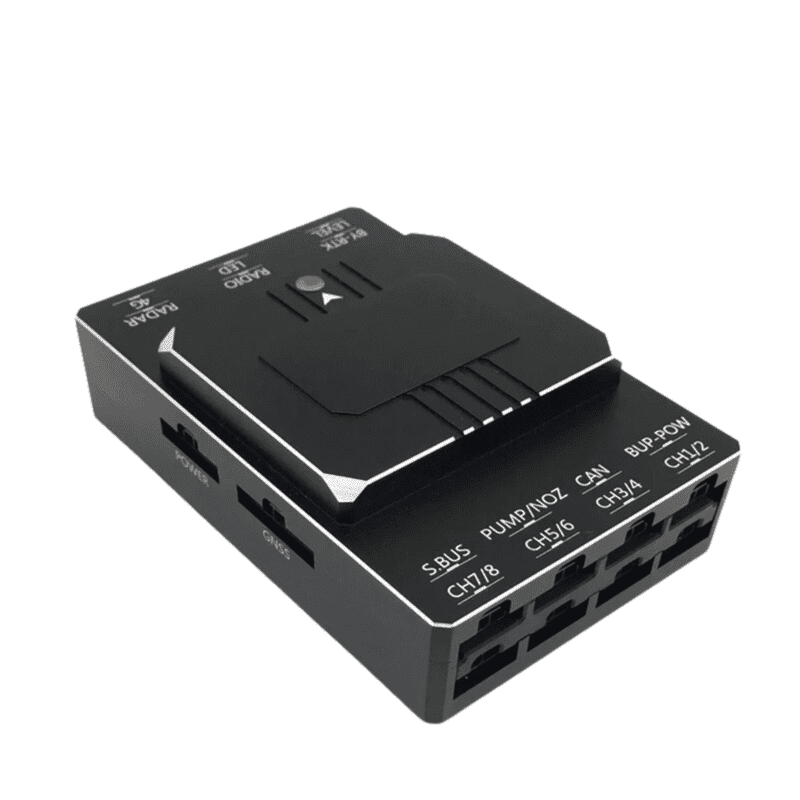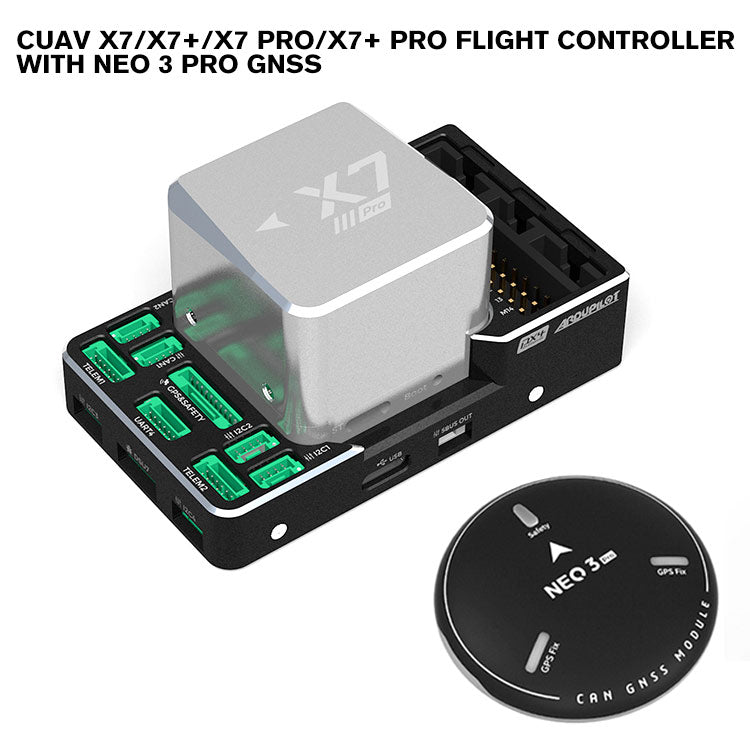SparkNavi Drone Flight Controller and GNSS/INS Made in Taiwan: Blazing A Trail in Drone Technology
SparkNavi Drone Flight Controller and GNSS/INS Made in Taiwan: Blazing A Trail in Drone Technology
Blog Article
The Value of Drone Trip Controllers in Modern Aerial Technology: Secret Elements and Their Impact
In the world of modern-day aerial innovation, drone flight controllers act as the crucial systems that manage a drone's efficiency and capacities. These innovative systems integrate vital components such as microcontrollers and GPS modules, promoting stability and precision in flight operations. Their duty is particularly noticable in independent functions, where advanced formulas improve navigating and challenge avoidance. As markets significantly count on drones for applications varying from agriculture to surveillance, the progressing modern technology within flight controllers increases crucial inquiries concerning their future effect and prospective advancements. What technologies exist ahead that could redefine our understanding of drone capacities?

Introduction of Drone Trip Controllers
In the realm of airborne innovation, drone trip controllers offer as the crucial brain of unmanned aerial vehicles (UAVs), making it possible for exact ability to move and security during trip. These innovative systems incorporate sensing unit information, refining algorithms, and control inputs, permitting drones to execute complex trip patterns with precision.
Drone trip controllers use various sensing units, such as gyroscopes, accelerometers, and GPS modules, to analyze the UAV's alignment and placement in real-time. This information is vital for maintaining balance and making certain risk-free procedure in diverse ecological conditions. The controllers procedure this data to make immediate adjustments to the drone's motors, permitting smooth transitions and receptive handling.
Furthermore, trip controllers are equipped with sophisticated software that supports functions such as waypoint navigation, barrier avoidance, and self-governing trip capabilities. This software is important for both industrial and entertainment applications, where dependability and precision are extremely important. As drone modern technology remains to breakthrough, the development of flight controllers will certainly play a critical duty in boosting UAV flexibility, safety, and performance, eventually expanding their applications across various sectors.
Key Components Explained
Understanding the fundamental components of drone trip controllers is crucial for comprehending how these systems operate effectively. At the heart of a flight controller is the microcontroller, which functions as the brain, refining data from various sensors and carrying out commands. Essential sensors consist of accelerometers and gyroscopes, which measure the drone's alignment and motion, providing important responses for stablizing.
One more key component is the barometer, which gauges elevation by measuring air pressure, while GPS components offer positional data, making it possible for autonomous navigating - SparkNavi drone flight controller and GNSS/INS made in taiwan. The trip controller likewise interfaces with Digital Speed Controllers (ESCs), which manage the speed of the drone's electric motors based upon the controller's commands
Communication modules, such as radio receivers, help with remote input, enabling operators to send out commands in real-time. In addition, some trip controllers integrate software program that can manage complex formulas for waypoint navigating, trip planning, and telemetry data evaluation.
Duty in Trip Security
Central to maintaining flight stability, drone flight controllers utilize advanced formulas to refine sensor data and make real-time adjustments. These controllers are equipped with a range of sensing units, consisting of gyroscopes, measures, and accelerometers, which constantly keep an eye on the drone's orientation, speed, and altitude. By analyzing this information, the trip controller can identify deviations from the desired trip path and react promptly to keep stability.
For circumstances, if a drone experiences an unforeseen gust of wind, the flight controller can swiftly change the motor rates to combat the disturbance, making certain a constant trip trajectory. This ability is crucial not only for hand-operated flight procedures yet also for implementing complicated maneuvers and keeping smooth flight in different ecological problems.
.png)
Additionally, the advanced algorithms used in trip controllers, such as PID (Proportional-Integral-Derivative) control, permit fine-tuning of the drone's response to modifications in trip problems. By enhancing these control parameters, trip controllers can improve stability, enhance responsiveness, and decrease pilot work. Inevitably, the role of trip controllers in making sure flight stability is essential for Read More Here the effective and secure procedure of modern drones throughout diverse applications.
Influence On Autonomous Procedures

Autonomous operations are especially important in varied applications such as shipment, farming, and surveillance services. With enhanced flight controllers, drones can autonomously navigate predetermined paths, efficiently collect information, and adapt to vibrant environments. This ability decreases the requirement for consistent human oversight, consequently boosting functional performance and security.
Additionally, the execution of artificial intelligence strategies within flight controllers allows drones to enhance their efficiency with time by learning from previous goals. This adaptability leads the way for a lot navigate to these guys more advanced self-governing applications, such as flock innovation, where multiple drones coordinate their actions to attain an usual purpose.
Future Trends in Flight Controllers
Developments in trip controller modern technology are poised to reinvent drone capacities in the coming years. One considerable fad is the assimilation of synthetic intelligence (AI) and device learning formulas, enabling drones to pick up from their atmospheres and make real-time decisions. This improvement will certainly improve self-governing navigation, challenge avoidance, and mission planning, substantially enhancing functional effectiveness and safety.
Additionally, the advancement of advanced sensing unit technologies, such as LiDAR and multispectral imaging, will certainly provide trip controllers with richer data inputs. This will help with much more advanced analytical abilities, permitting drones to carry out complex tasks, such as accuracy agriculture, rescue and search, and framework examinations with extraordinary precision.
One more arising trend is the miniaturization of trip controller elements, which will certainly cause lighter and a lot more compact drones. This advancement will extend trip periods and payload capabilities, making drones more functional for numerous applications.
Conclusion
In conclusion, drone trip controllers function as essential components in modern airborne modern technology, ensuring security and accuracy in ability to move with the combination of microcontrollers, accelerometers, and GPS modules. SparkNavi drone flight controller and GNSS/INS made in taiwan. Their ability to enable autonomous procedures and adjust to different applications highlights their value across numerous markets. As advancements in expert system and sensing unit modern technology remain to emerge, the possibility for boosted capabilities and enhanced functional performance in drone systems will likely improve the future of aerial applications
Central to maintaining flight stability, drone trip controllers use advanced algorithms to process sensing unit data and make real-time modifications. By translating this data, the flight controller can determine discrepancies from the desired flight course and react without delay to keep stability.
Furthermore, the advanced algorithms used in flight controllers, such as PID (Proportional-Integral-Derivative) control, permit for fine-tuning of the drone's action to changes in flight problems. Inevitably, the role of trip controllers in guaranteeing flight security is vital for the reliable and risk-free operation of modern drones across varied applications.
The developments in drone flight controllers not just boost trip security but additionally considerably affect self-governing procedures. SparkNavi this link drone flight controller and GNSS/INS made in taiwan.
Report this page